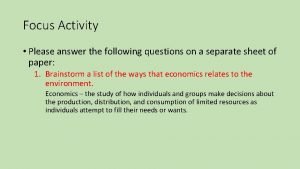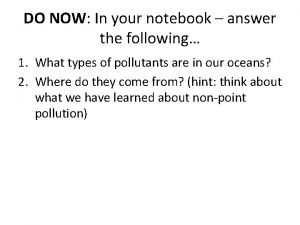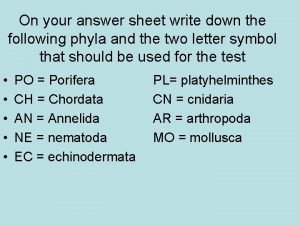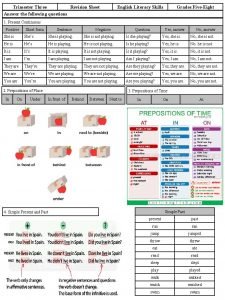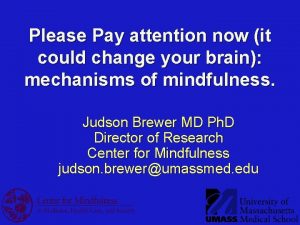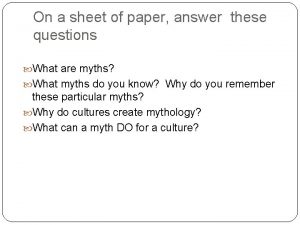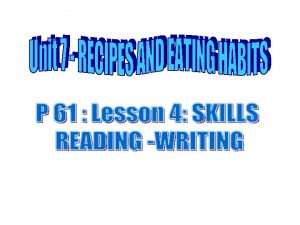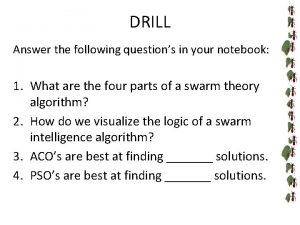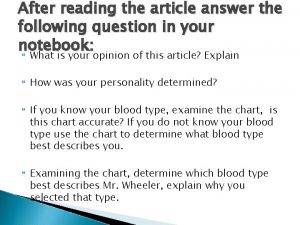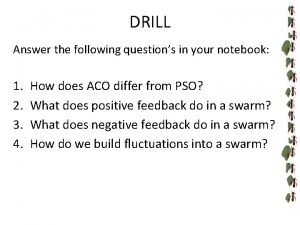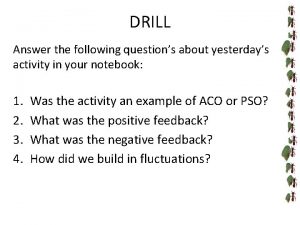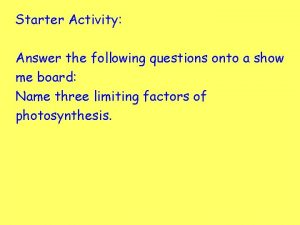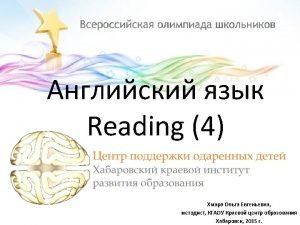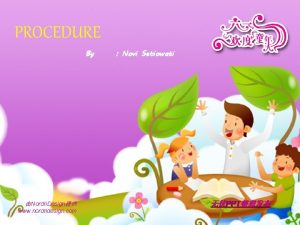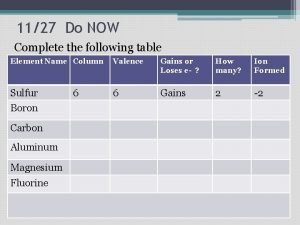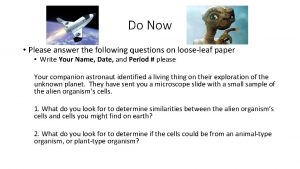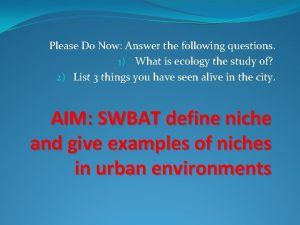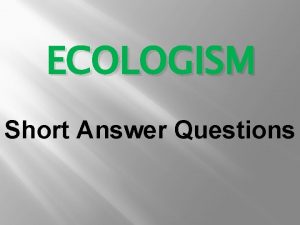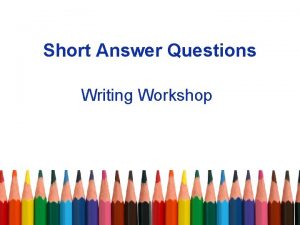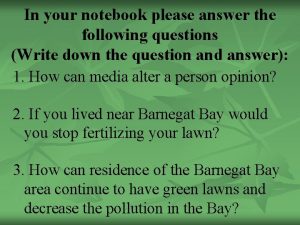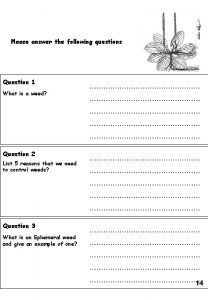Please Do Now Answer the following questions 1When























































- Slides: 55

Please Do Now: Answer the following questions. 1)When are quizzes in this class? 2)When are homeworks due in this class? 3)Come up with 2 things we use plants for. AIM: SWBAT list reasons we should study plant biology

Agenda Do Now Announcements Housekeeping type stuff ◦ ◦ Botany Bowl HW Passes Notebook Powerpoints How should I be taking notes in plant bio? Why plant biology? Cool video If time, begin evolution review

Announcements Due to a fire in the copy machine, I do not have hard copies of Homework #1 yet Available online at northsideplant biology. weebly. com I will have hard copies ASAP

Announcements Please remember to turn in the syllabus/contract that you and your parents have signed That is your first and easiest homework grade All work being turned in goes in the bucket

What is the Botany-Bowl A competition between the classes of your subject The “match” each week will be comparing the average Friday Quiz grade When a team accumulates 5 “match” victories, the whole class gets a homework pass

Speaking of homework passes… When you ask a real good question or answer a difficult one, I will give you a point. I will mark this by stamping your notebook. Keep track of your stamps, 10 of them will earn you a HW pass The passes can simply be dated and turned in instead of the actual packet.

Your Notebook Should have a separate section for the Do Nows The other section will be reserved for actual notes. The first thing on the page will be the AIM You will be taking Cornell notes below that

A few notes on Powerpoints Red text or a red slide means you must copy that material down Something that is underlined will be an important point or question (more on that later) I will often put a picture in the powerpoint when I want to see hands up

Cornell Notes All pages should be divided the following way AIM goes at the top In a thin section on the left will be where you put key points and questions (underlined stuff) The bulk of your notes will go on the right (stuff in red or on red slides)

Cornell Notes Along the bottom is where you will summarize the notes of the day in your own words This will help with retention Will be extremely valuable for college

Why study plants?

Plants are amazing living organisms Largest organism (> 100 m) Largest flower (~ 1 m) Longest living (~ 5000 years) Photo credits: ma_suska; Bradluke 22; Stan Shebs

We could not live without plants • Plants produce most of the oxygen we breathe. • Plants produce most of the chemically stored energy we consume as food and burn for fuel. • Plants produce an amazing assortment of useful chemicals.

We can’t live without oxygen! NO oxygen X X Joseph Priestley recognized that an animal’s breathing “injured” air. An animal kept in a sealed container would eventually pass out.

We can’t live without oxygen! Priestley also recognized that plants have the ability to “restore” the air. We now know that they produce oxygen as a by-product of photosynthesis. Oxygen produced

Plants fix carbon dioxide into energy- rich molecules we animals can use as food CO 2 Plants convert CO 2 gas into sugars through the process of photosynthesis. They are the producers in almost all ecosystems

Plants can produce an amazing assortment of chemicals CO 2 vitamin A vanillin vitamin C caffeine morphine

Studying about plants informs us about our world Cells were first observed in plants. Drawing of cork by Robert Hooke, discover of “cells” Photograph of cork cells Photo credit: ©David B. Fankhauser, Ph. D

Viruses were first purified from plants Viruses infect humans as well as plants, causing many diseases including AIDS, hepatitis, SARS, swine flu, cervical cancer, chicken pox, and polio. Tobacco Mosaic Virus Image Copyright 1994 Rothamsted Research.

Mendel’s studies of peas revealed the laws of inheritance . . . which help us understand human diseases such as sickle cell anemia. . .

Why study plants? Most important reason… to figure out how to feed everybody

The world population grows and grows. . . The world population is expected to triple between 1950 (2. 5 billion) and 2020 (7. 5 billion)

The world population grows and grows. . . A major objective of plant science is to increase food production; current estimates indicate that we need to increase production by 70% in the next 40 years.

Malnutrition and hunger disproportionately kill children In 2004, 60 million people worldwide died. (Source: World Health Organization, 2008)

Malnutrition and hunger disproportionately kill children 10, 000 of them were children under 5 years of age, of which 99% lived in low- or middle-income countries (Source: The State of the World's Children, UNICEF, 2007)

Malnutrition and hunger disproportionately kill children 5 million children under the age of 5 die each year due to undernutrition and related causes. That’s one preschool-aged child dying a preventable death every six seconds.

Malnutrition and hunger disproportionately kill children A lack of adequate vitamin A kills one million children a year. (Source: Vitamin and Mineral Deficiency, A Global Progress Report, UNICEF)

Globally, more than one billion people per year are chronically hungry That’s more than the total population of the USA, Canada and the EU. (Source: FAO news release, 19 June 2009)

More than two billion people per year are chronically anemic due to iron deficiency That’s about the total population of the USA, Canada, the EU, and China. (Source: World Health Organization, WHO Global Database on Anaemia)

What can scientists do about this?

Plant scientists can contribute to the alleviation of hunger By developing plants that § are drought or stress tolerant § require less fertilizer or water § are resistant to pathogens § are more nutritious

Plant growth is often limited by drought stress Image source: IWMI

Drought stress is compounded by increased global temperatures Temperature change forecast 2071 -2100 period, relative to the 1961 -1990 period. In warm regions, crop yields can drop ~3 – 5% with every 1°C increase in temperature. © European Communities, 1995 -2009. Image Source: The PESETA Project

Plant biologists study ways to keep plants fresh after harvesting Post-harvest losses can ruin 50% or more of a grain harvest. Aspergillus mold growing on corn kernels. Greening along with solanine production can occur in improperly stored potatoes. Solanine is harmful and can be toxic in large quantities. Photo credits: Dr. C. M. Christensen, Univ. of Minnesota. ; WSU; Pavalista, A. D. 2001

Improved nutrient content in plants can help alleviate malnutrition Hunger Vitamin A deficiency Subsistence level diets are usually nutrient-poor. Our bodies need vitamins and minerals as well as calories. Malnutrition is primarily a disease of poverty. Anemia (young children) Image sources: Petaholmes based on WHO data; WHO

The practice of fortifying foods with vitamins (such as folate and vitamin A) and micronutrients (such as iron, zinc, and iodine) has dramatically reduced malnutrition in much of the world. Photo credit: © UNICEF/NYHQ 1998 -0891/Giacomo Pirozzi

Genetically biofortified foods Iron-enriched rice () Vitamin A–enriched rice Wild-type (top) and antioxidant-enriched tomatoes Photo credits: Golden Rice Humanitarian Board © 2007; Credit: ETH Zurich / Christof Sautter; Reprinted by permission from Macmillan Publishers, Ltd: Butelli, E. , et al. , Nature Biotechnology 26, 1301 - 1308 copyright (2008).

Plants provide us with more than food Plants: are sources of novel therapeutic drugs provide better fibers for paper or fabric are sources of biorenewable products provide renewable energy sources Photo credit: tom donald

Plants produce hundreds of compounds we use as medicines or drugs • Willow (Salix) bark as a source of aspirin (acetylsalicylic acid) • Foxglove (Digitalis purpurea) as a source of digitalis (treatment for cardiac problems) • Pacific yew (Taxus brevifolia) as a source of taxol (treatment for cancer) • Coffee (Coffea arabica) and tea (Camellia sinensis) as sources of caffeine (stimulant)

Malaria kills millions of people The regions of the world with highest risk for malaria. Hay, S. I. , et al. , (2009) PLo. S Med 6(3): e 1000048. doi: 10. 1371/ journal. pmed. 1000048

The protozoan Plasmodium causes malaria Plasmodium inside a mouse cell Image by Ute Frevert; false color by Margaret Shear.

Cinchona tree bark contains a compound, quinine, that kills Plasmodium But Plasmodium are developing resistances to quinine, so other sources of anti-malarial compounds must be found. Image credits: Köhler; CDC

Plant cell walls provide important durable materials Wood is primarily composed of plant cell walls. Photo credit: tom donald

Cell walls Primary plant cell walls are composed mainly of carbohydrates and proteins. Some cells produce a rigid secondary wall that incorporates lignin, an insoluble cross-linking compound. Photo credit: www. wpclipart. com/plants; Zhong, R. , et al. , (2008) Plant Cell 20: 2763 -2782 .

Wood and fibers are everywhere Clothing made from plant fibers (cotton, linen) Plant fibers are used for making paper, and before that papyrus. Painting canvas is made from flax or hemp fibers. Wood is used for buildings and furniture. Rembrandt van Rijn (1631)

paper and fabric Cotton is being bred for increased pest resistance and better fiber production. Photo credits: Chen Lab; IFPC

The genome sequence of poplar, a source of fiber for paper, was recently completed This information is being used to improve the efficiency of paper production. Photo credit: Chml. Tech. com

Plants can replace petroleum for many products and purposes Petroleum is NOT a renewable resource Unfortunately, it takes millions and millions of years to convert dead organic material into petroleum. . . and we are running out of it. creativecartoons. org.

Plants can be a source of biofuels Energy from sunlight Sugars, starches and cellulose can be fermented into ethanol Image source: Genome Management Information System, Oak Ridge National Laboratory

Plants can be a source of biodiesel Biodiesel produced from rape, algae and soybeans are replacing petroleumderived diesel. Image sources: Tilo Hauke, University of Minnesota, Iowa State University Extension.

Bioenergy crops should not affect food production or prices Miscanthus giganteus is a fast growing perennial bioenergy crop that grows on land unsuitable for food production. Photo Illustration courtesy S. Long Lab, University of Illinois, 2006

Ethanol isolated from cell wall cellulose is an important energy source Cell walls from corn stalks and other agricultural residue Ethanol Image source: Genome Management Information System, Oak Ridge National Laboratory

Plants can be sources of biorenewable and biodegradable resources Energy from sunlight Produce plastics from renewable plant material Photo Illustration courtesy S. Long Lab, University of Illinois, 2006

Plants can be sources of biorenewable and biodegradable resources Energy from sunlight Scientists are investigating cost-effective ways to convert plants into plastics. n o i at ad r g e d io B Photo Illustration courtesy S. Long Lab, University of Illinois, 2006

Why study plants? TAKE AWAY: Plants are the most important source of the resources that keep us fed, healthy, sheltered, and clothed.
 Activity 1 answer the following questions
Activity 1 answer the following questions B. answer the following questions
B. answer the following questions In your notebook answer the question
In your notebook answer the question Answer the following question in your notebook
Answer the following question in your notebook Now answer the
Now answer the Now answer the following questions
Now answer the following questions On your answer sheet, answer the following questions
On your answer sheet, answer the following questions In your answer sheet answer the following questions
In your answer sheet answer the following questions Will you please be quiet please raymond carver
Will you please be quiet please raymond carver Now answer these questions
Now answer these questions Now answer these questions
Now answer these questions Now answer these questions
Now answer these questions Please pay now
Please pay now Now i see it now you don't
Now i see it now you don't Answer the following questions science
Answer the following questions science Dress code in a sentence
Dress code in a sentence Use the graph below to answer the following questions
Use the graph below to answer the following questions On a sheet of paper answer the following questions
On a sheet of paper answer the following questions Look at the film stills and discuss the questions
Look at the film stills and discuss the questions Work in pairs. answer the questions about the text
Work in pairs. answer the questions about the text In your notebook answer the following questions
In your notebook answer the following questions After reading answer the following questions
After reading answer the following questions In pairs answer the questions add your questions
In pairs answer the questions add your questions Answer the following questions on your notebook
Answer the following questions on your notebook Read the article answer the questions
Read the article answer the questions Look at the pictures. ask and answer
Look at the pictures. ask and answer Answer the question in your notebook
Answer the question in your notebook Activity answer the following questions
Activity answer the following questions In your notebook answer the questions
In your notebook answer the questions Watch the video and answer questions
Watch the video and answer questions Task 10 test yourself
Task 10 test yourself Activity 1 answer the following questions
Activity 1 answer the following questions Mu look
Mu look In your notebook answer the question
In your notebook answer the question Answer these questions using complete sentences
Answer these questions using complete sentences Read the text and answer the following questions
Read the text and answer the following questions Answer these questions orally
Answer these questions orally Answer the following questions using complete sentences
Answer the following questions using complete sentences Answer the following questions
Answer the following questions Task 2 answer the following questions briefly
Task 2 answer the following questions briefly Exercise answer the following questions
Exercise answer the following questions A) read the text and answer the questions
A) read the text and answer the questions Look at the picture and answer the question
Look at the picture and answer the question After watching the video answer the following questions
After watching the video answer the following questions Answer the following questions
Answer the following questions Nordri solutions
Nordri solutions What is an saq apush
What is an saq apush Bajo alto gordo perezoso in english
Bajo alto gordo perezoso in english Please do the following
Please do the following Type your answer...
Type your answer... Please contact me if you have any questions
Please contact me if you have any questions Please feel free to interrupt me
Please feel free to interrupt me Act out the dialogue
Act out the dialogue Complete the following table element
Complete the following table element Now complete the following sentences using the collocations
Now complete the following sentences using the collocations Lesson 7 now you see it the copper cycle answer key
Lesson 7 now you see it the copper cycle answer key
